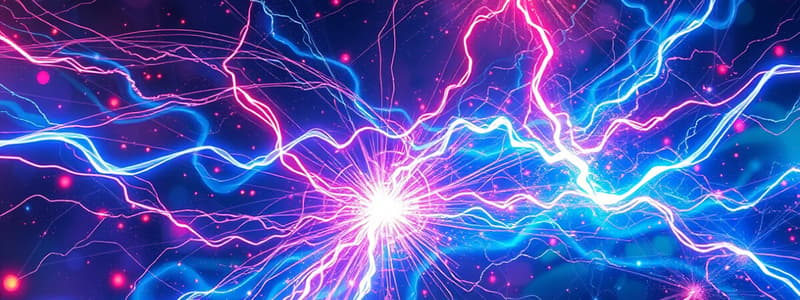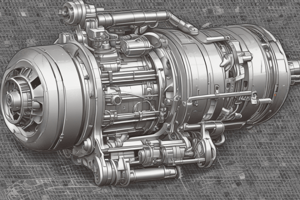Podcast
Questions and Answers
What happens to the conductor when it is placed in the magnetic field?
What happens to the conductor when it is placed in the magnetic field?
- It moves from the weaker to the stronger field.
- It remains stationary.
- It moves from the stronger to the weaker field. (correct)
- It becomes magnetized and repels itself.
Which of the following occurs when the ignition switch is turned on?
Which of the following occurs when the ignition switch is turned on?
- The magnetic field of the starter is weakened.
- Current flows to the field winding of the starter. (correct)
- The solenoid assembly is disconnected.
- The armature becomes stationary.
What initiates the movement of the armature shaft in the starter action?
What initiates the movement of the armature shaft in the starter action?
- Magnetic disruption in the solenoid.
- Repulsive force from the current in the armature. (correct)
- The ignition system powering the flywheel only.
- Pull from the yoke on the solenoid.
What is the role of the solenoid assembly during the starter action?
What is the role of the solenoid assembly during the starter action?
How does the movement of the fork affect the starter mechanism?
How does the movement of the fork affect the starter mechanism?
Study Notes
Action of Starter
- A conductor carrying current placed in a magnetic field experiences attractive forces between opposite fields and repulsive forces between similar fields.
- The direction of the magnetic field around the conductor can be determined using the right-hand rule.
- The conductor moves from regions of stronger magnetic fields to weaker ones, resulting in the movement of the armature shaft.
Starter Action
- Turning on the ignition switch initiates current flow to the field winding of the starter, which strengthens the magnetic field.
- Further action of the ignition switch allows current to flow to the armature through carbon brushes, creating a repulsive force that moves the armature shaft.
- Current initially flows to the solenoid assembly, magnetizing the pulling winding.
- The energized solenoid pulls itself towards the winding, causing the yoke to move the fork, which meshes the starter pinion with the teeth of the flywheel.
- As a result, the movement of the armature shaft transfers drive to the flywheel, cranking the engine.
Studying That Suits You
Use AI to generate personalized quizzes and flashcards to suit your learning preferences.
Description
This quiz explores the principles behind starter actions in electrical engineering, focusing on the interaction of current-carrying conductors in magnetic fields. It covers concepts such as the right-hand rule and the movement of conductors within magnetic fields. Test your understanding of starter mechanisms and their applications.




